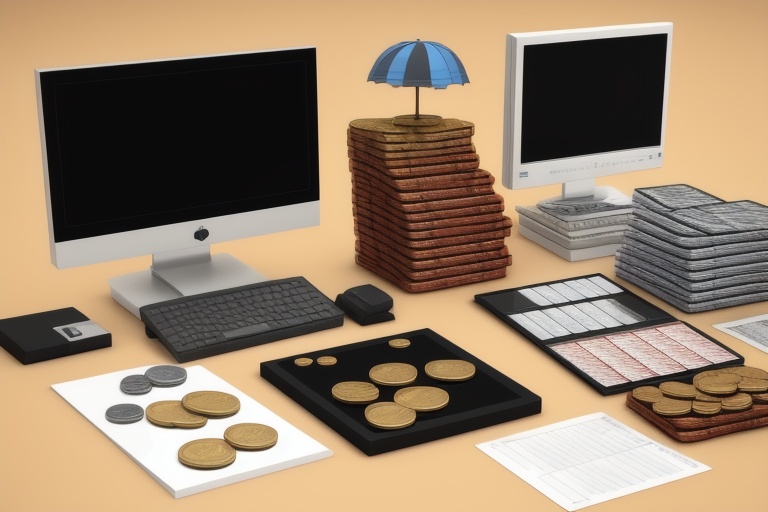Understanding the intricacies of coin grading can be challenging for those new to the world of numismatics. However, mastering this aspect is essential as it directly impacts the appraisal and acquisition of coins. This comprehensive guide will demystify the 70-point coin grading scale, illustrate the terminology used in grading, and provide concrete examples for each grade to streamline your understanding of this nuanced system.
Understanding the intricacies of coin grading can be challenging for those new to the world of numismatics. However, mastering this aspect is essential as it directly impacts the appraisal and acquisition of coins. This comprehensive guide will demystify the 70-point coin grading scale, illustrate the terminology used in grading, and provide concrete examples for each grade to streamline your understanding of this nuanced system.
The Basics of Coin Grading
Coin grading employs a systematic scale that assesses a coin's condition, ranging from 1 to 70. One signifies the most worn or damaged state a coin can be in, while 70 denotes a coin in perfect mint condition. The grading scale is a fundamental tool used by collectors and dealers alike to determine a coin's market value and collectability.
Dissecting the 70-Point Scale
Let’s explore each grading level in detail, beginning with the most worn conditions and ascending to the peak of mint perfection.
Grades 1-8: From Barely Discernible to Clearly Worn
Grade 1: Poor (PO) - A coin that is heavily worn, making identification a challenge. Only the slightest details are discernible.
Grade 2: Fair (FR) - Coins at this grade allow identification of the type and date, though still substantially worn and potentially damaged.
Grade 3: About Good (AG) - Although wear is prevalent, more detail is visible, and critical elements are identifiable.
Grade 4: Good (G) - Key design elements are worn but discernible as outlines. The coin has a significant level of wear, indicative of extensive circulation.
Grade 6: Good - Plus (G+) - While still worn, key features such as the rim and main devices show improvement and are easily visible.
Grade 8: Very Good (VG) - Basic details are more evident, and the majority of the coin's inscriptions are legible, despite clear signs of wear.
Grades 12-30: Worn Details to a Hint of Wear
Grade 12: Fine (F) - Wear is evenly distributed, with the overall design and larger details remaining clear.
Grade 20: Very Fine (VF) - Inscriptions are fully legible, and the central devices show good detail with moderate wear occurring only on the highest points.
Grade 30: Good Very Fine (VF30) - This grade's coins exhibit stronger detail with only minimal wear on key design elements.
Grades 40-58: Edging Towards Mint Condition
Grade 40: Extremely Fine (XF or EF) - A coin that boasts sharp inscriptions and devices with minor wear on the raised portions of the design.
Grade 45: Choice Extremely Fine (XF45 or EF45) - Select examples that present minimal wear and strong visual appeal, sought after by serious collectors.
Grade 50: About Uncirculated (AU) - These coins reveal only traces of wear on their highest points and maintain much of their mint luster.
Grade 55: Good About Uncirculated (AU55) - A step above the previous grade with sharper details and at least half of the original luster present.
Grade 58: Choice About Uncirculated (AU58) - Coins in this condition display minute wear marks and possess excellent luster, making them nearly indistinguishable from uncirculated examples.
Grades 60-70: The Pinnacle of Perfection
Grade 60: Mint State Basal (MS60) - Coins with no evidence of circulation wear, though they may possess contact marks and hairlines.
Grades 61-70: Mint State (MS) - Coins within this bracket exhibit pristine condition, with variations in qualities such as luster and strike determining the exact grade in this range.
The Nuance of Proof Coins
It is essential to recognize that proof coins are not assessed on the standard grading scale. Proof is a designation of the coin's manufacturing process, which includes special treatment to achieve a more refined and detailed appearance.
By familiarizing yourself with this grading scale, you will enhance your ability to evaluate the condition and value of coins in your collection or those you plan to purchase. The grade of a coin is crucial in its valuation; cultivating your grading expertise will prove invaluable in your numismatic endeavors.
Our forthcoming segments will delve into additional elements that bear influence on a coin's value, such as rarity, mint marks, and the historical context in which a coin was created. Bookmark our page and join us on this enriching journey into the heart of coin collecting, ensuring that your numismatic knowledge continues to flourish.
Information for this article was gathered from the following source.


